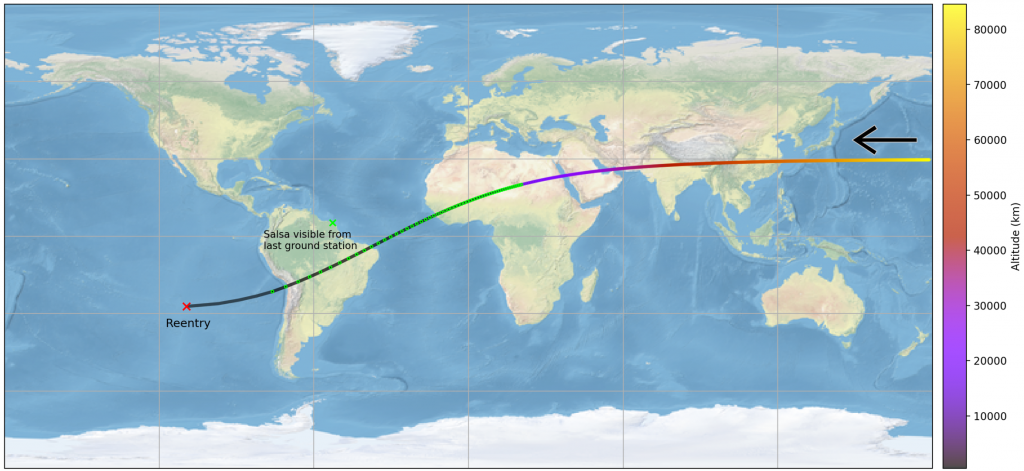ESA’s Cluster mission is coming to an end, with the first of the mission’s four satellites, nicknamed Salsa, scheduled to reenter Earth’s atmosphere on 8 September.
Salsa’s reentry will be the first time anyone has attempted a ‘targeted reentry’, where a satellite is manoeuvred months to years in advance to line it up to reenter in a specific area. As a result, the time of reentry can also be predicted with high accuracy, even though the spacecraft is not controlled during the reentry.
The current time window for Salsa’s reentry into the atmosphere is on 8 September between 18:20 – 21:20 CEST, or 10:20-13:20 local time in the South Pacific.
Predicting a targeted reentry
To be able to perform a targeted reentry, the satellite must be in a highly eccentric orbit like Cluster’s.
Cluster is in an orbit around Earth that takes 2.5 days to complete. It goes as far out as ~130 000 km (apogee) and at its closest is at an altitude of just a few hundred kilometres (perigee). This large orbit makes it susceptible to the gravity of the Sun and Moon, which can make the satellite’s altitude drop up to dozens of kilometres from one perigee to the next.
Because for Salsa it is known exactly during which perigee the satellite drops from 112 km to the 80 km altitude where satellites break up, its reentry can be predicted with high accuracy.
This also makes Salsa’s reentry predictions very different from those of Earth Observation satellites like ERS-2 or Aeolus, which circled the planet every 90 minutes in low-Earth orbits. As these satellites decreased in altitude much more gradually, it was harder to predict during which particular turn around Earth the spacecraft would exactly burn up – and where in the world it was going to be at that time.

In January 2024, Cluster’s operators carried out a series of manoeuvres to ensure that Salsa’s reentry will take place over a sparsely populated region in the South Pacific.
Pinning down the time
In contrast to the changing ground tracks and reentry time predictions for ERS-2, Salsa’s ground track is mostly locked in, moving slightly to the east if at all.
This does not mean there is no uncertainty. Predictions of the level atmospheric drag depend on space weather and geomagnetic activity and influence the exact reentry time and location.
The current uncertainty of about 1.5 hours around the predicted reentry time of 17:50 UTC/19:50 CEST will be greatly reduced after Salsa has completed the last high-drag, low-altitude perigee pass on 6 September.

Discussion: no comments